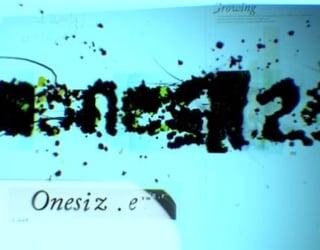
Onesize Showreel 2009 and Memories..
Onesize is one of the first studios, along with Dstruckt and Anders Schroder, that introduced me to the world of motion design....

Today, we’re going to take a look at Giant Ant Media, based in Vancouver.
I chose to showcase this studio for one main reason: they are a great example of what After Effects does best.
As you may know, I’m a big fan of typographic animation. Since motion design is ultimately about communicating a message, text often plays a key role in our compositions.
Title sequences, broadcast packages, commercials, logos, etc... We are constantly animating typography—and it’s always a joy to play with!
Through three short animations created for the documentary film festival Doxa, Giant Ant Media once again demonstrates that the text/voice combo remains one of the most effective ways to visually reinforce a message.

If you want to practice in After Effects, I think trying to recreate some of the text transitions used in these films will be very useful. Breaking down frame by frame an animation you like, and trying to understand the technique behind a movement, are some of the best ways to improve faster in After Effects. Be curious!
Of course, Giant Ant Media isn’t reinventing the wheel. This kind of typographic animation has been done many times before, and if, like me, you consume dozens of motion-oriented videos daily, you’ll probably get a bit of a déjà vu feeling.
Below is their showreel, followed by two well-executed animations that we’ll discuss just after:

The last two videos probably reminded you of many similar works.
It’s important to remember that these videos are made for clients.
In this context, there are roughly three scenarios:
No matter if we (industry folks) find the final videos outdated or overused—for the target audience, it might be something completely new. Your client will be happy, and that’s what matters!
I’m no exception to the rule, and my project for Monoprix is a good example. They came to me to create an animation in the style of Netvibes and Feedly. The result was an animation for the brand’s iPhone app. If you’ve followed my work, you won’t find anything particularly new, and you’ll likely get a sense of déjà vu. But the client was thrilled—and that’s perfectly fine. Of course, I would have loved to do something completely new, but they hired me to do what I’m good at, and that will often be the case for you too. ;)
The rest of the time, have fun, and unleash your creativity on personal projects. These experiments are never in vain. They will bring you experience, new techniques, and new clients—who will want the same thing as… what you created ;)
I am the Founder of Mattrunks. I work as Creative Director and Motion Designer in my studio. I also create video tutorials to share my passion of motion.
Newsletter
© 2007-2025 Mattrunks – Developed by Grafikart